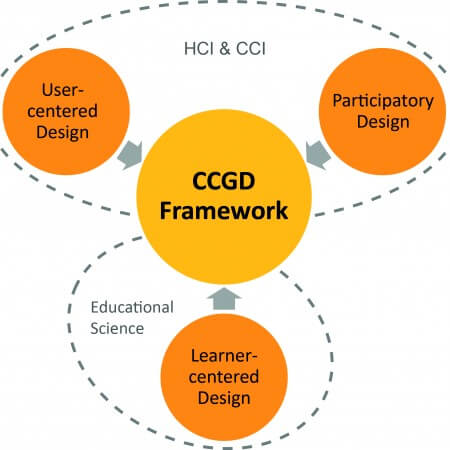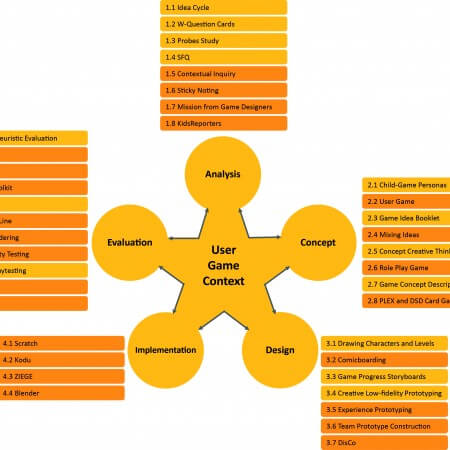Nowadays, most game designers primarily rely on personal experience and prefer to work with their self-perceived unlimited creativity when designing games. However, what children expect and how they make meaning of applications may not be aligned to the designers’ assumptions. Therefore, an adequate consideration of children in the game development process is necessary in order to meet their needs.
The child-centered game development (CCGD) framework aims to provide game researchers, developers, and designers with a collection of approaches for the active involvement of children aged 10 to 14 years throughout the development process [Moser, 2013]. The framework is based upon the belief that partnering with children is important to understand what is needed to develop games for children. Children are encouraged to take over the role of users, testers, informants, design partners, or design innovators.
When game designers and developers are willing to work with children, they will gain a better understanding of the children’s perspectives, their wishes, and needs and, likewise, children will learn about the complexity to design games for children (i.e., practice based learning is supported). Therefore, different approaches were self-developed or adapted for the analysis, concept, design, implementation and evaluation phase of games. A combination of active user involvement with practice-based learning experiences for children is achieved within the self-developed CCGD approaches through linking traditional HCI approaches with educational approaches and learning content. For example, children are enabled to actively contribute their knowledge from educational approaches by applying personal descriptions in the child-game-persona approach. Additionally, existing approaches from CCI were adapted to suit the CCGD framework and to provide a large variety of approaches. The CCGD framework aims to support a win-win situation for both sides (i.e., for children and for researcher, designer, or developer).
The framework provides eight approaches for the analysis phase (e.g., w-question cards, probes study, sticky noting, mission from designer, or KidsReporter), eight approaches for the concept phase (e.g., child-game personas, game idea booklet, mixing ideas, role play game, or game concept description), seven approaches for the design (e.g., comicboarding, game progress storyboards, creative low-fidelity prototyping, team prototype construction, or DisCo), four tools for the implementation phase (i.e., Scratch, Kodu, Ziege, or Blender), and 11 approaches for the evaluation phase (e.g., PLEX heuristic evaluation, eSFQ, MemoLine, PX laddering, or pair playtesting) in order to work with groups of children in the context of the school.



